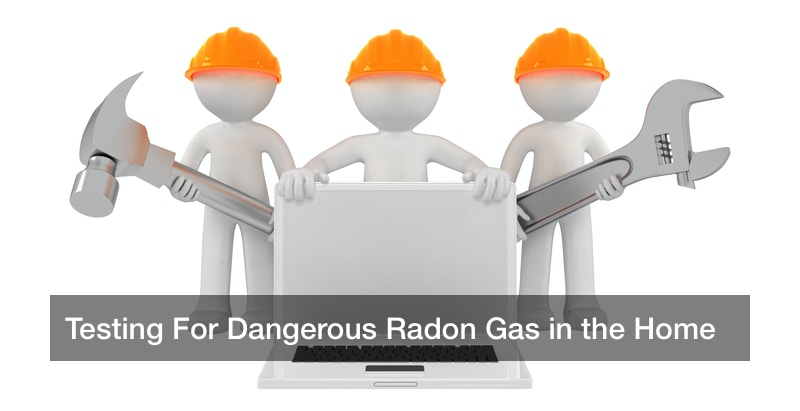
American homeowners have to be alert for many different hazards in the home, anything from frayed electrical cords setting the carpet on fire to hard water contaminating their laundry or shower all the way to carbon monoxide. There are detectors and filters to take care of some of these issues. Every home, for example, has a carbon monoxide detector in it, and a person can have crews install a water filter to deal with hard water or other contaminants. But a less-known hazard that may present itself in American homes today is radon gas. This is a colorless, tasteless, odorless gas that can often lead to health issues ranging from dizziness and nausea all the way to deadly lung cancer in cases of high concentrations of radon. This gas may appear in the basements and lower levels of any American home that is situated on top of radon deposits in dirt and rocks, and it can leak into the home all year round and poison the air. Radon gas testing can be done to find out if the home has excessive radon in its air, and after radon gas testing confirms dangerous levels of this element, steps can bee taken to remove this danger.
The Danger
What is radon, and why should a person contact a local radon testing company or order a testing kit online? Radon is something to take seriously, as this gas poisons more Americans per year than some people may realize. The EPA, the Environmental Protection Agency, has stated along side the Surgeon General’s office that nearly 20,000 lung cancer deaths per year can be attributed to radon gas. This is some serious radiation; if a family home is exposed to radon levels of 4pCi/l is exposed to nearly 35 times as much radiation as the Nuclear Regulatory Commission would allow if that family were standing next to the fence of a radioactive waste site. Due to this, radon has become the second leading cause of lung cancer in the United States today, and what is more, many homes are already in danger, and radon in your home can build up without anyone knowing. Nearly one in 15 American homes is believed to already have radon levels at or above the EPA’s action level, meaning that many people are already at risk of the adverse health effects of this radioactive gas. What can be done?
Radon Gas Testing
There is no way to “feel” if a home has radon gas in it, and radon mitigation will not be done until a home tests positive for a dangerous presence of this radioactive gas. The bet way to deal with radon is to be aware of this danger and become proactive about it. Testing kits for radon gas can be bought at a local hardware store after a customer asks a store associate for one, or they can even be bought online at the correct websites and shipped to a homeowner, ready to use. Radon gas testing could save lives if done in a timely manner.
Radon gas testing can be done with either a short term or long term test, based on the homeowner’s patience or how thorough they want to be. A short-term test will collect air samples for up to 90 days, and when the testing is done, it will send this data to the correct agencies, who will then analyze it to check for dangerous radon concentrations. When this examination is done, the homeowner will then be notified. But a short-term test may be slightly inaccurate due to its time frame, so a patient homeowner who feels that they can afford to wait for results will invest in a long-term test kit. This kit will test for radon beyond 90 days, and after that time, the data will be sent to agencies who analyze it and can send back accurate results to the homeowner.
A positive result means taking action to clear out radon from the home right away. Passive systems of radon gas mitigation can temporarily reduce the radon levels of indoor air by over 50%, and if radon ventilation fan are added, the levels can be reduced further still. This may be necessary for extreme cases.
